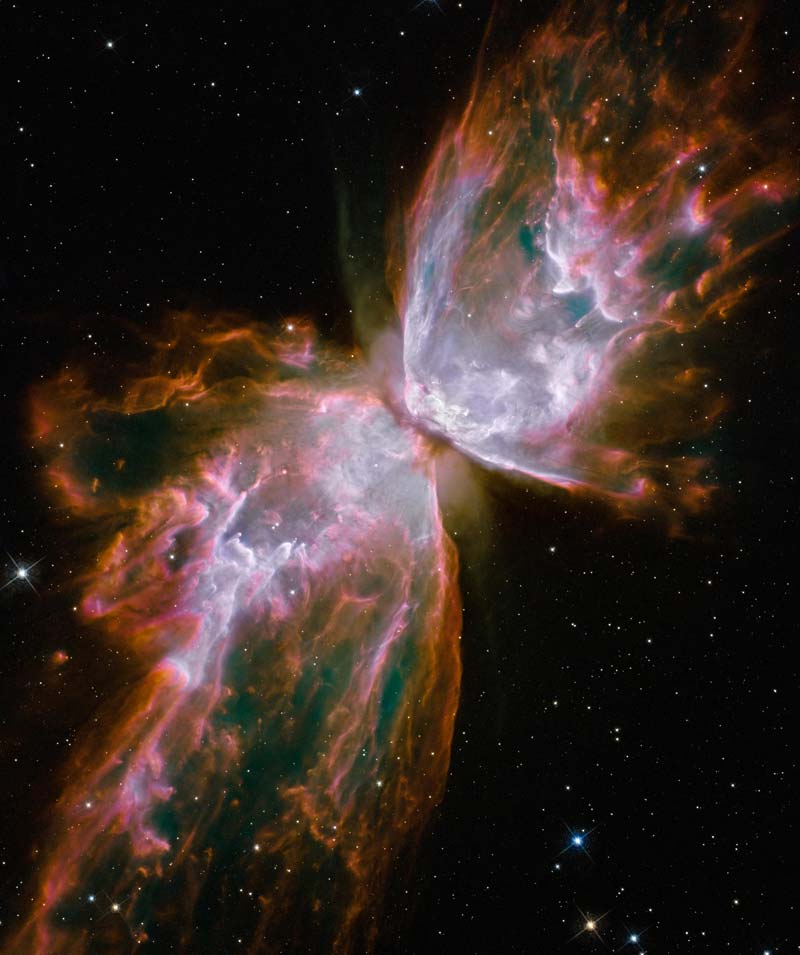Hubble Telescope is Back: Fantastic New Images Released

NASA's Hubble Space Telescope is back in action after its most recent upgrade, with a spectacular array of new images showing off the telescope's new capabilities.
Among the first images — a closely guarded secret until today — is one of galaxy NGC 6217. The picture was taken with NASA's newly refurbished Advanced Camera for Surveys (ACS).
This is "the day many of us have all been waiting for to celebrate Hubble's new beginning," said Ed Weiler, associate administrator for NASA's Science Mission Directorate at NASA Headquarters in Washington, D.C.
Hubble also snapped pictures of a group of five galaxies, a densely packed star cluster, an eerie "pillar of creation," and a "butterfly" nebula.
Scientists also released spectroscopic observations that slice across billions of light-years to probe the cosmic-web structure of the universe and map the distribution of elements that are fundamental to life as we know it.
Sen. Barbara A. Mikulski, D-Md., who has provided key support for Hubble and NASA in Congress, unveiled the images at NASA Headquarters. She was given the honorary title "Godmother of Hubble." Mikulski's district includes the Space Telescope Science Institute in Baltimore, where Hubble images are processed.
"I fought for the Hubble repair mission because Hubble is the people's telescope," said Mikulski, chairwoman of the Commerce, Justice and Science Appropriations Subcommittee that funds NASA.
Breaking space news, the latest updates on rocket launches, skywatching events and more!
Hubble's new instruments, including the Wide Field Camera 3, a new super-sensitive spectrograph, were installed on the 19-year-old telescope by shuttle astronauts during a 13-day service mission in May. The mission, which was initially cancelled in 2004 due to safety concerns after the 2003 Columbia shuttle disaster, also revived two instruments — Hubble's main ACS and a versatile imaging spectrograph — that were never designed to be fixed in space.
The new instruments are more sensitive to light and, therefore, will improve Hubble's observing efficiency significantly. It is able to complete observations in a fraction of the time that was needed with prior generations of Hubble instruments.
The WFC3 was actually used to take a picture of Jupiter's new black spot — thought to have been caused by a comet collision — back in July, but the camera wasn't yet fully calibrated then. WFC3 also took new images of the Omega Centauri star cluster in our galaxy, in which the contrast between hot and cool stars can vividly be seen, and the Butterfly Nebula, for which astronomers used the new filters on the camera to see the envelope of gas expanding away from this planetary nebula.
"We couldn't be happier about the way things have gone," Bob O'Connell, chair of the science oversight committee for the Wide Field Camera 3 at the University of Virginia. "We're fully confident the camera is working as it was intended to work."
Images taken with the new Cosmic Origins Spectrograph were taken in one-tenth of the time of Hubble's older spectrograph, which will allow scientists to view 10 times as many targets or look at targets one-tenth as bright, said James Green, the COS principal investigator at the University of Colorado. Scientists hope to build a catalogue of hundreds or thousands of targets and map the distribution of matter throughout the universe.
Hubble will also be able to continue observations of Eta Carinae, one of the most massive stars in the galaxy (and actually a pair of stars), that were suspended by instrument failure in 2004, said David Leckrone, senior project scientist for Hubble at NASA's Goddard Space Flight Center in Greenbelt, Md. Eta Carinae has erupted before and is expected to do so again.
Despite a few bumps in the three-month checkout, Hubble's systems and instruments are all up and running now.
NASA's new administrator Charlie Bolden was also on hand to congratulate the scientists and astronauts on Hubble's new lease on life. Bolden was one of the astronauts on the shuttle mission that deployed Hubble in 1990.
"Hubble has a special place in my heart," Bolden said. Through Hubble's past and future observations, "our view of the universe and our place within it will never be the same," he added.
Join our Space Forums to keep talking space on the latest missions, night sky and more! And if you have a news tip, correction or comment, let us know at: community@space.com.

Andrea Thompson is an associate editor at Scientific American, where she covers sustainability, energy and the environment. Prior to that, she was a senior writer covering climate science at Climate Central and a reporter and editor at Live Science, where she primarily covered Earth science and the environment. She holds a graduate degree in science health and environmental reporting from New York University, as well as a bachelor of science and and masters of science in atmospheric chemistry from the Georgia Institute of Technology.
